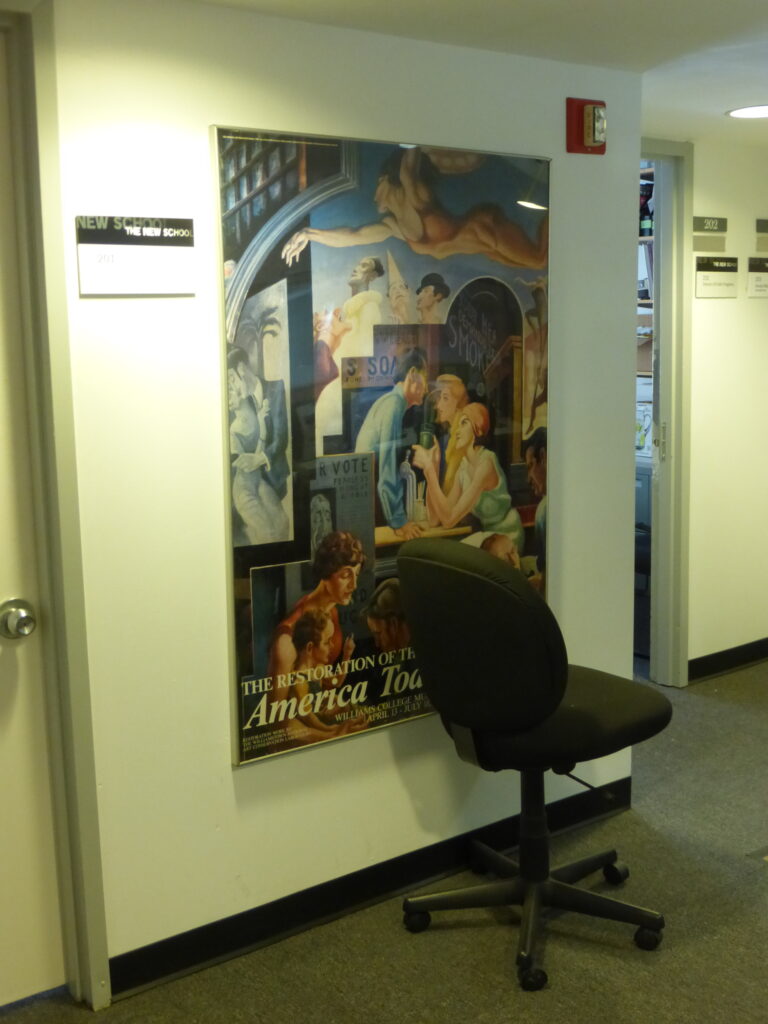
A recent article in The New York Times reported that the Metropolitan Museum of Art will soon acquire Thomas Hart Benton’s America Today murals, with plans to have them exhibited by 2015. The article included a complete history of the murals, from their original home in the New School’s Joseph Urban building in 1931, to their sale by the New School to AXA Equitable Life Insurance Company in 1982. And it stressed the artistic significance of the cycle, both for its subject matter that addresses social issues at a pivotal point in America’s history and for its critical success which helped establish the Works Progress Administration mural programs of the late 1930s. This artistically important series, however, despite the apparent prominence it played in the early life of the New School, has little presence at the University today. I find the New School’s indifference to this aspect of its cultural history astonishing, especially given the increasing attention being given to America Today elsewhere.
A related topic is the country’s shifting attitude towards the practice of deaccessioning. Institutions, like the Rose Art Museum at Brandeis University and the National Academy Museum, have come under attack in recent years for even considering selling works from their collection in order to raise capital. In 1982, The New School sold America Today to generate endowment funds, a move that would likely generate protests today. Is the lack of interest in Benton’s murals at the New School today tied to this aspect of their history? Or is it something more fundamental, like the late-nineteenth century feel of Benton’s style, that seems irrelevant now to The New School? Whatever the reason, America Today deserves a more prominent role in the story of the New School’s past and how it informs who we are today.
What role would America Today play in the academic and cultural life of The New School today if it were still part of our collection?
What is The New School’s current approach to deaccessioning and would these guidelines have applied to our sale of America Today?
Why does politically challenging art, like our Orozco murals, seem more relevant to the New School today than art which appears to celebrate American life, like Benton’s America Today murals? Is this an acceptable way to gauge an artwork’s value?
William Kimmel
Staff, The New School

